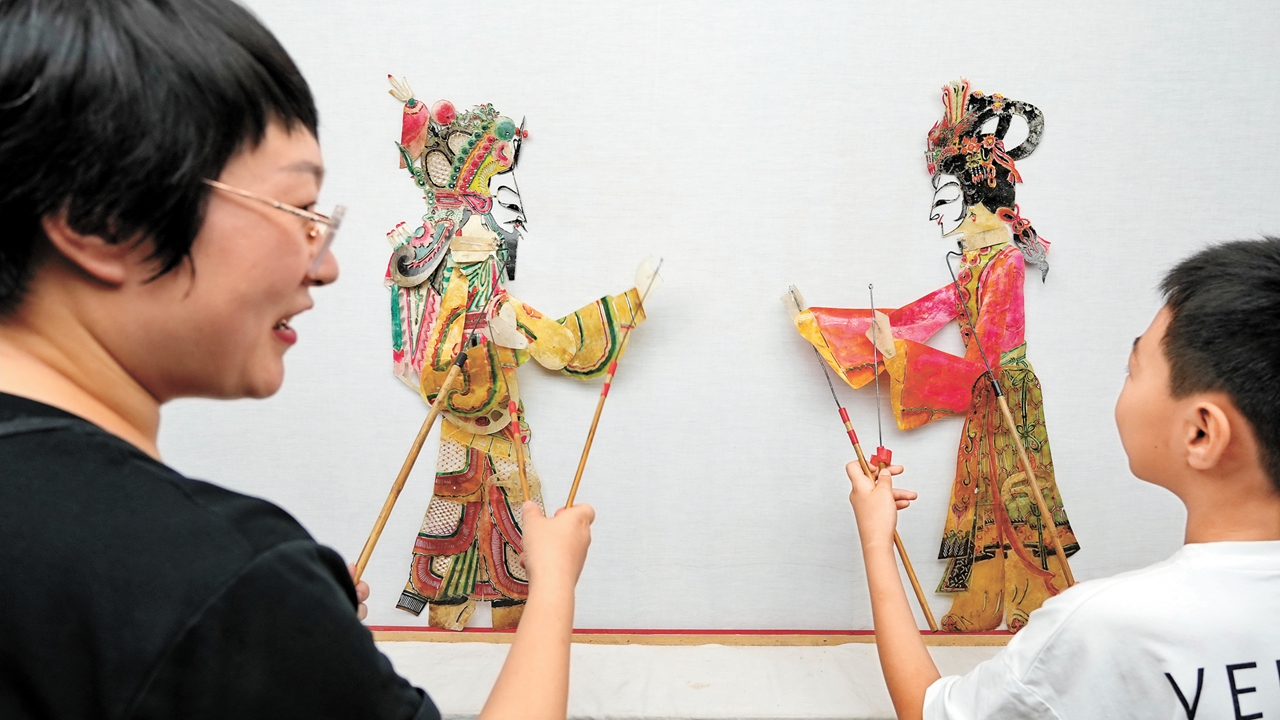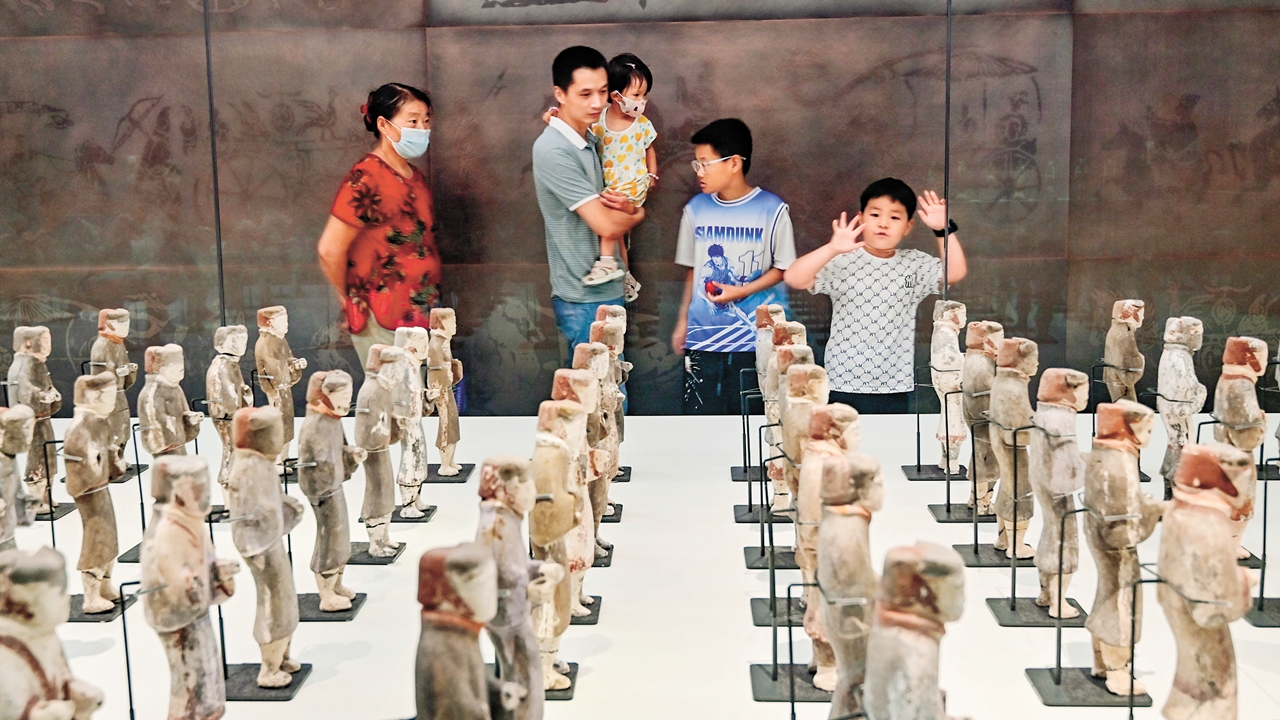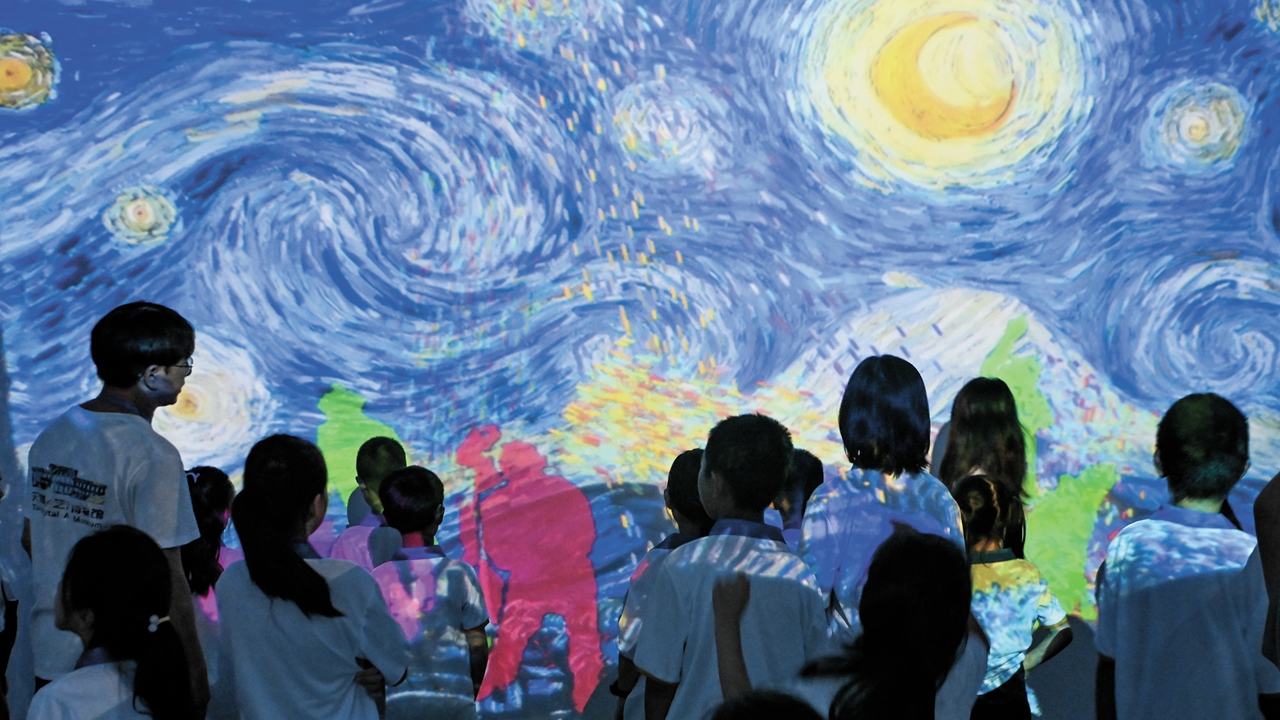Interest in traditional culture drives museum craze
Writer: | Editor: Zhang Chanwen | From: Xinhua | Updated: 2023-09-04
Booking a museum ticket during the busy summer vacation in China is no easy task. It is not uncommon for tickets to be fully booked for the entire week, leaving many aspiring visitors disappointed.
To cater to the surging demand, the Beijing Municipal Cultural Heritage Bureau announced Aug. 18 that 46 museums in the city would cancel their Monday closures until the end of the month.

Children camp at the Anji outlet of Zhejiang Musuem of Natural History during its night opening hours in this July 26 file photo. Photos by Xinhua
Museum staff across the country have reported unprecedented crowds this summer. Guo Sike, the curator of the Confucius Museum in Qufu, Shandong Province, attributes this museum craze to a growing fascination with traditional Chinese culture, especially among young Chinese. Guo suggests that the younger generation has a deep appreciation for the splendid traditions of their heritage. He also highlights the role of modern technologies, such as virtual reality (VR), in presenting traditional culture in more captivating and engaging ways.

A child experiences the shadow puppet show at a museum in Luanzhou, Hebei Province in July.
Museum tours hot
One Sunday morning in August, the Shanxi Museum in Taiyuan City attracted a long line of visitors even before its opening hour. Wang Bin, a tourist from Beijing who was accompanied by his wife and son, explained that they were particularly interested in the museum’s display of bronzes, Buddha statues, artifacts from traditional residential courtyards, and ancient opera stages. “The visit will teach my kid about Shanxi Province’s rich history, ethnic integration, the culture of Shanxi merchants, and ancient local architecture,” he said, adding that he values how this experience broadens his child’s perspective and knowledge.
Between Jan. 1 and Aug. 15, the Shanxi Museum had welcomed 1.11 million visitors. Over one-third of these visits (approximately 400,000) occurred during the summer vacation. In contrast, the museum had a total of 1.41 million visits in the entirety of 2019. To meet the demands of visitors, the museum responded by extending its opening hours by one hour on Saturdays and Sundays during the summer vacation. They increased the number of free guided tours to nearly five times the usual amount, as shared by Zhang Huiguo, the museum’s deputy curator.
The Shaanxi History Museum in Xi’an, the provincial capital, is another attraction experiencing high visitor enthusiasm, resulting in highly sought-after tickets during the summer vacation. Despite having a daily maximum capacity of 12,000 visitors, the museum’s ticket booking platform receives over 600,000 online visits each day. Tickets are sold out as soon as they become available for reservation. The museum decided to cancel its Monday closures and extend its Sunday opening hours for the duration of the summer vacation.

Families are seen at a cultural relics exhibition at a museum in Qingzhou, Shandong Province on July 30.
Lure of Traditional Culture
At the Confucius Museum in Shandong, Du Pengfei, a secondary school student from Heze City, was captivated by the allure of traditional culture.
“I did my homework before coming here, and I knew that the Kong family boasts a long history of book printing, and many of the books displayed were made by woodblock printing,” said Du, referring to the ongoing exhibition in the museum on books and documents of the Kong family (Kong is the family name of Confucius). “Woodblock printing was an important invention of the ancient Chinese people,” said Du.
The popular study tours with a focus on traditional culture has attracted large crowds to museums.
Catering to the needs of these study tours, the Confucius Museum, for example, has launched a variety of events apart from its regular exhibitions themed on Confucius. These include showcasing the Kong family’s customs, rituals, daily etiquette, as well as calligraphy and aesthetic education summer camps.
In Xi’an, the traditional Qinqiang opera, a local folk opera genre added to the country’s intangible heritage list in 2006, has become a popular subject of study tours.
Local museums themed on Qinqiang opera provide tour participants with opportunities to learn about the culture not only through books but also through hands-on experiences. This includes donning the performers’ costumes, learning to sing a classic excerpt of the opera, drawing Qinqiang opera masks, and joining a shadow puppet performance.

Students attend an exhibition at Tianjin Digital Art Museum on July 30.
“Museums are bridges connecting the past, present, and future. The museum craze is driven by a renaissance of Chinese traditional culture in recent years. More and more people wish to learn about the profound Chinese civilization and historical heritage through visiting museums,” said Yang Chaoming, professor at the Advanced Institute for Confucian Studies, Shandong University.